
The success of the August Revolution in 1945 opened a new era for the Vietnamese people - the era of independence and freedom. However, immediately after gaining independence, the young revolutionary government had to face numerous difficulties: the treasury was empty, more than 90% of the population was illiterate, and the severe consequences of famine killed 2 million people. In that context, an inevitable requirement was set: to maintain independence, food, weapons and logistics for the resistance war had to be ensured. The Vietnamese economy became a wartime economy, built in the direction of self-reliance, associated with the motto: both producing and fighting; both resisting and building the nation.
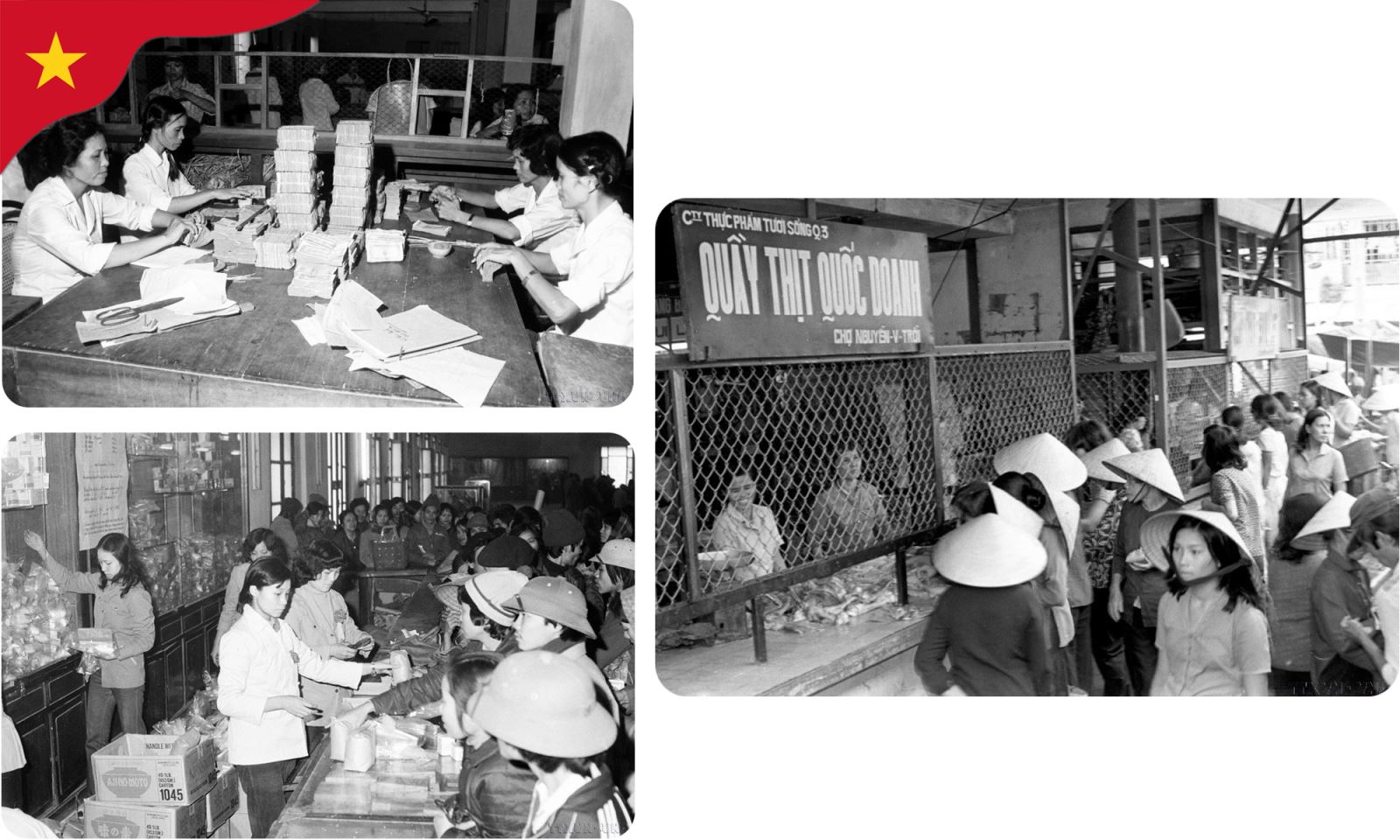
Before 1986, the Vietnamese economy had two forms of ownership, the two main economic types were state-owned and collective enterprises.
During the resistance war against French colonialism, the policy of all-people, comprehensive, long-term resistance was concretized by drastic economic measures. Our people carried out "scorched earth resistance", ready to destroy bridges, cut roads, evacuate factories to stop the enemy's advance, and at the same time focused on building bases. In the Viet Bac resistance zone, farmers "with one hand plowing, one hand shooting" produced food and contributed human and material resources to the resistance. Primitive military factories were established, although they produced rudimentary weapons, they promptly met the needs of combat. The movement to increase production spread everywhere, arousing the spirit of "All for the front, all for victory". Thanks to that, despite extremely difficult conditions, the resistance economy still ensured logistics for major campaigns, especially the Dien Bien Phu campaign in 1954, creating a victory that "resounded throughout the five continents, shook the world".
After the Geneva Agreement, the country was temporarily divided, the North became the great rear of the whole country, both building a socialist economy and supporting the South. Land reform and agricultural collectivization contributed to solving the land problem, gradually improving farmers' lives, and consolidating the worker-peasant alliance. State-owned industry was built with the support of socialist countries, marking the birth of important industrial projects, such as: Thai Nguyen Iron and Steel Industrial Park, Hanoi Mechanical Factory, Uong Bi Power Plant... When the US imperialists waged a war of destruction in the North, the spirit of "hammer in one hand, gun in the other" spread everywhere: workers both produced and directly held guns to protect the factory; when traffic was destroyed, it was immediately restored to ensure the transportation lifeline. At the same time, the South, amidst bombs and bullets, also organized local production forces, formed logistics right in the mountains and forests, revolutionary bases, both feeding troops and defending the land, serving as a support for the struggle movement.
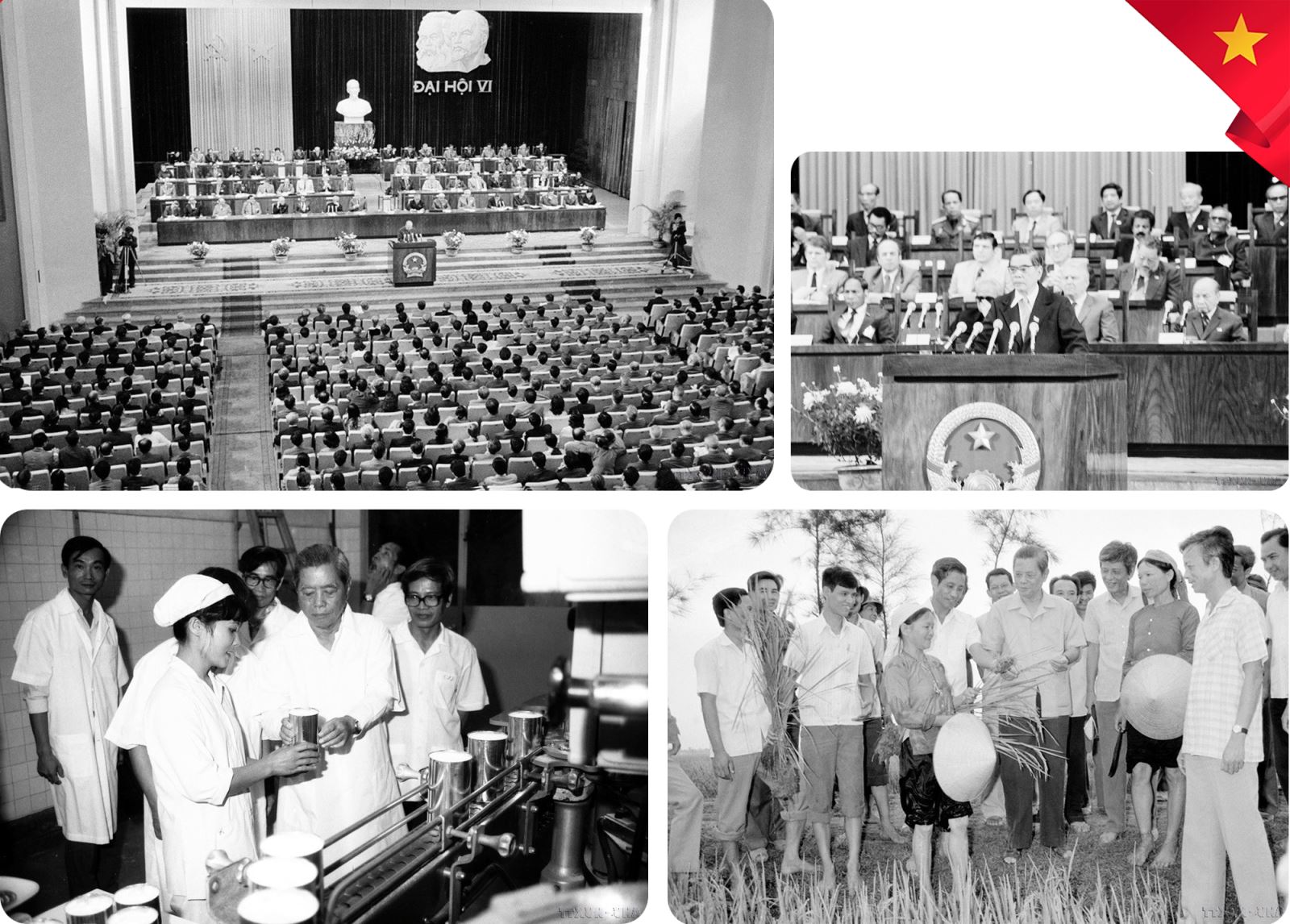
In 1986, with the spirit of "looking straight at the truth, correctly assessing the truth, and clearly stating the truth", the 6th Party Congress set out the renovation policy.
On the legendary Truong Son road, people and goods continuously flowed into the South. The Ho Chi Minh Trail was not only a military supply route but also a food route, a symbol of the iron will and logistical strength of the nation. The frontline laborers, the youth volunteer teams, the “long-haired troops” in the South… were all typical images of the harmony between production and combat. In the fierce bombs and bullets, people still held their plows and guns firmly; the rice and corn fields were still green; and shipments were still promptly delivered to the battlefield.
It can be said that the wartime economy, although still self-sufficient and with low production levels, promoted the spirit of self-reliance to the highest level, laying the foundation for the construction of a socialist economy later on. It was in the midst of the war that Vietnam formed a team of economic cadres and technical workers with fortitude, gradually building the material foundation for the country. More importantly, the model of "producing while fighting" affirmed the truth: the economy is the rear, the solid material foundation ensuring military victory, the source of strength for the nation to fight a long-term resistance war, leading to national unification.
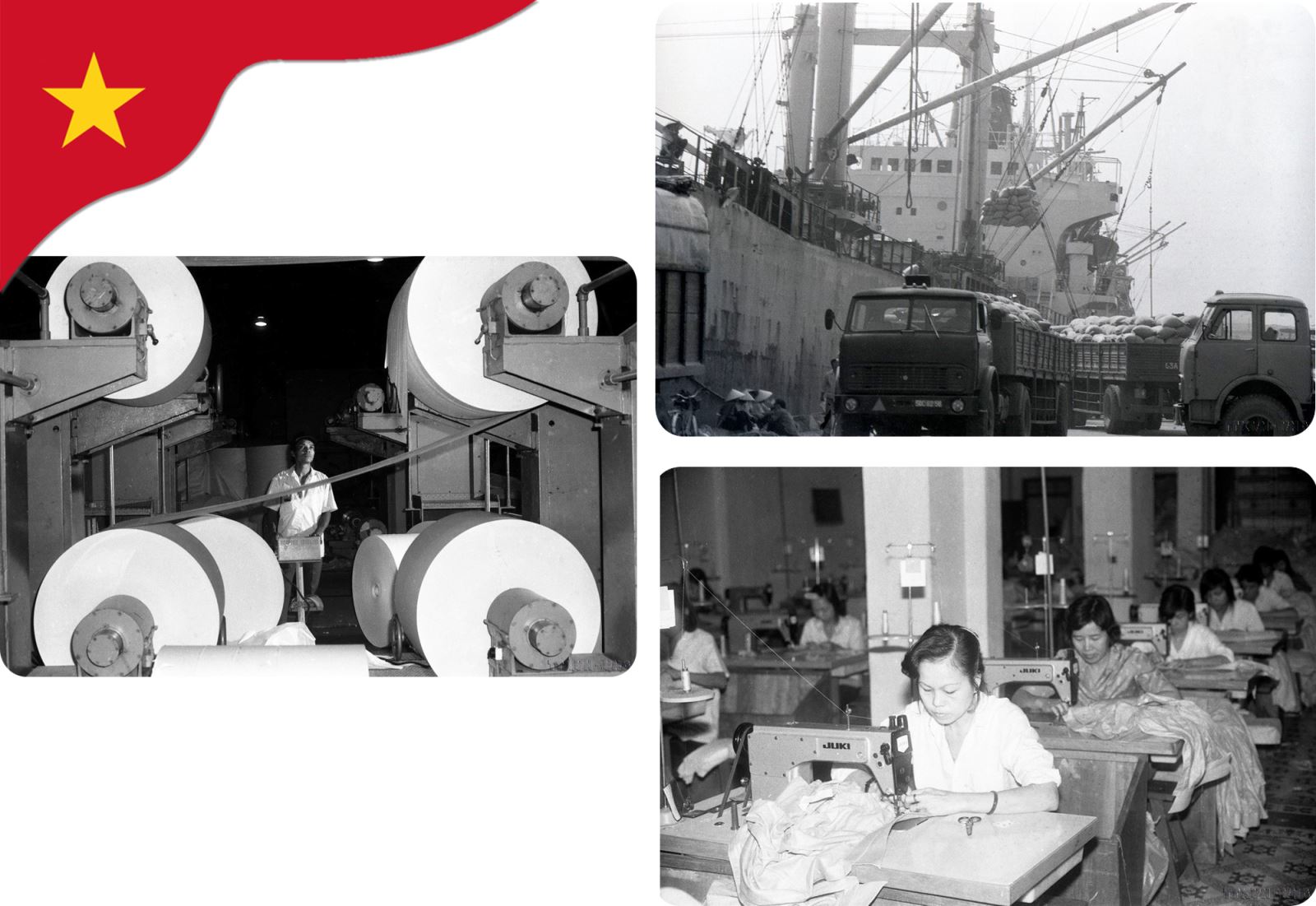
Thanks to the implementation of the renovation policy, Vietnam has transformed from a poor country with backward socio-economic infrastructure into a middle-income developing country, deeply integrated into the regional and global economy.

After the country's reunification, Vietnam entered a period of economic recovery in a difficult post-war context. Many cities and villages were devastated, infrastructure was almost exhausted, and there was also a siege and embargo. Although the centralized bureaucratic subsidy management mechanism was effective during the resistance war, it revealed its limitations in peacetime. Labor productivity was low, production was stagnant, goods were scarce, inflation was high, and people's lives were extremely difficult. This reality posed the need to innovate economic development thinking, to find a suitable model to help the country escape the crisis and gradually move forward.
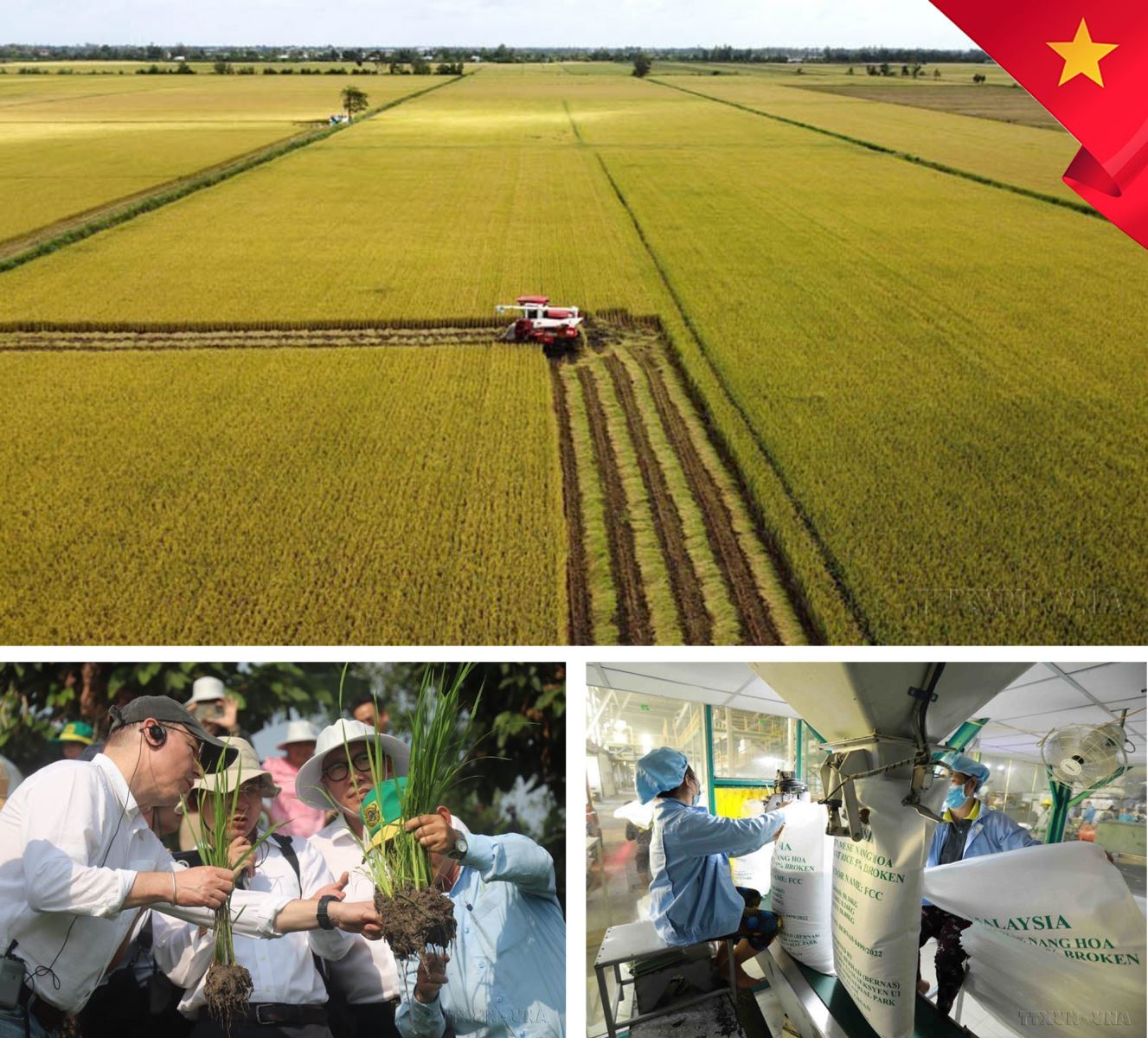
Vietnam's agriculture develops in a modern, sustainable direction, applying industrial science and innovation to increase productivity and quality.
In that context, the 6th Party Congress in 1986 opened a historic turning point - initiating the comprehensive renovation policy, focusing on economic renovation. Accordingly, Vietnam shifted to developing a multi-sector commodity economy, operating under a market mechanism, with State management and socialist orientation. That strategic decision opened the door to integration, liberated production, and created a great driving force for growth. Since then, Vietnam has escaped the crisis and made great strides forward.
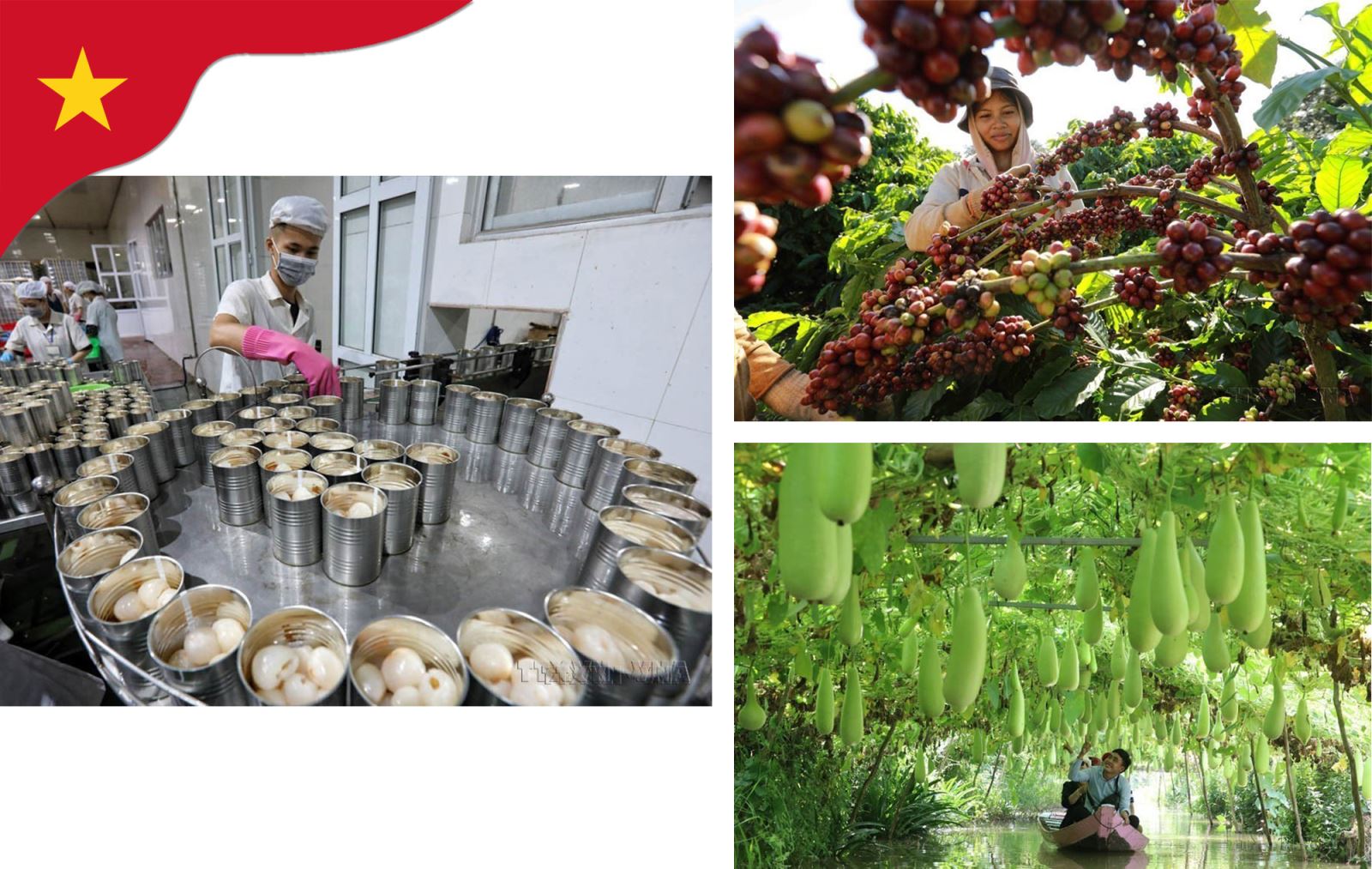
Agriculture is developed, Vietnam is a country with many leading agricultural products in the world.
Economic growth has become the clearest evidence of the country's vitality and potential. For many consecutive years, Vietnam has maintained a stable GDP growth rate of 6-7% per year, despite major fluctuations in the global economy. Even in challenging times such as the 2008 financial crisis or the COVID-19 pandemic, the Vietnamese economy has demonstrated its ability to recover quickly. GDP in 2024 reached 7.09%, putting Vietnam in the group of a few countries with the highest growth rates in the region and the world. The size of the economy in 2024 has approached the 500 billion USD mark, nearly 100 times higher than in 1986, ranking 4th in Southeast Asia and 34th globally. Entering 2025, the growth momentum continues to be impressive with GDP in the first 6 months of the year reaching 7.52%, the highest in Southeast Asia. If in 1989, GDP per capita was only about 100 USD, by 2024, this figure had reached 4,700 USD. These figures not only reflect macroeconomic stability, but also show an increasingly strong desire for development. Continuous high growth rates for many years have made Vietnam one of the most dynamic economies in Asia, reinforcing the belief in the ability to realize the goal of becoming a developed, high-income country by 2045.
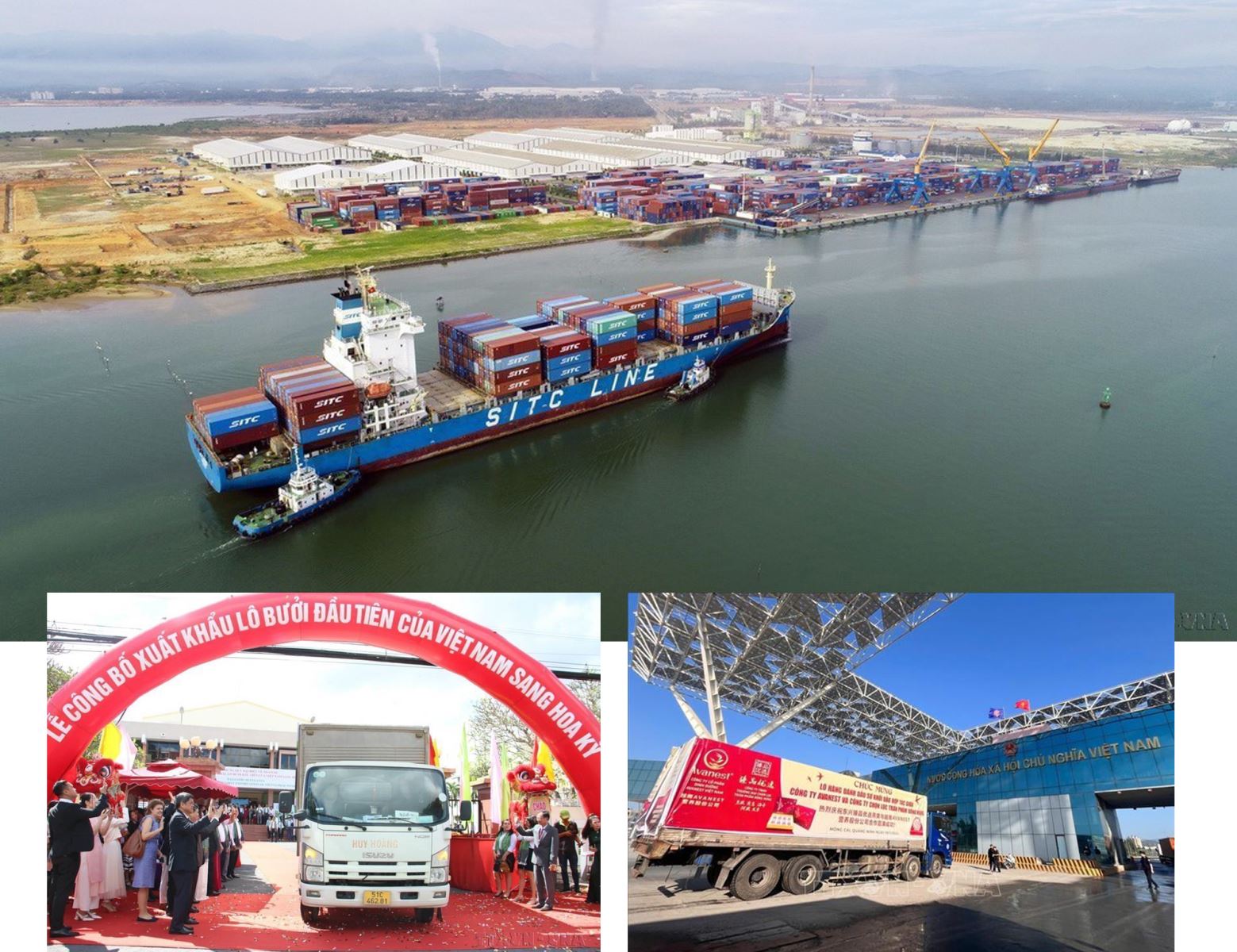
Vietnam has become one of the most dynamic economies in Asia.
In agriculture, from a place of hunger and having to import food, Vietnam has risen to become one of the world's leading rice exporting powers, while affirming its position with many key agricultural products, such as coffee, pepper, cashew nuts, and tropical fruits. In recent years, the export value of agricultural, forestry and fishery products has continuously increased sharply and reached new records, especially in 2024 reaching 62.5 billion USD, an increase of 18.7% compared to 2023 and the highest ever. Thereby contributing significantly to the overall growth and improving the lives of tens of millions of farmers. Along with agricultural development, the new rural construction program has fundamentally changed the face of the countryside, the income of rural residents has increased sharply, and the poverty rate has decreased rapidly. Agriculture not only ensures national food security but also becomes one of the pillars to bring Vietnam deeper into the global value chain.
If agriculture is the mainstay of the economy, industry and construction play a leading role in the country's modernization process. From a small and fragmented place, Vietnam has now formed many key manufacturing industries, such as textiles, footwear, electronics, automobile manufacturing, and mobile phones. The processing and manufacturing industry has become the main driving force of growth, while the construction sector has developed strongly with an increasingly modern infrastructure system. In general, the industrial and construction sector currently contributes 38% of GDP, reflecting a profound shift in economic structure. Vietnam has become a major regional manufacturing center, an important link in the global supply chain of many corporations such as Samsung, LG, Intel, and Foxconn. Hundreds of modern industrial parks, export processing zones, and coastal economic zones have been built, creating a new look for the country and affirming a long step forward on the path of industrialization and modernization.
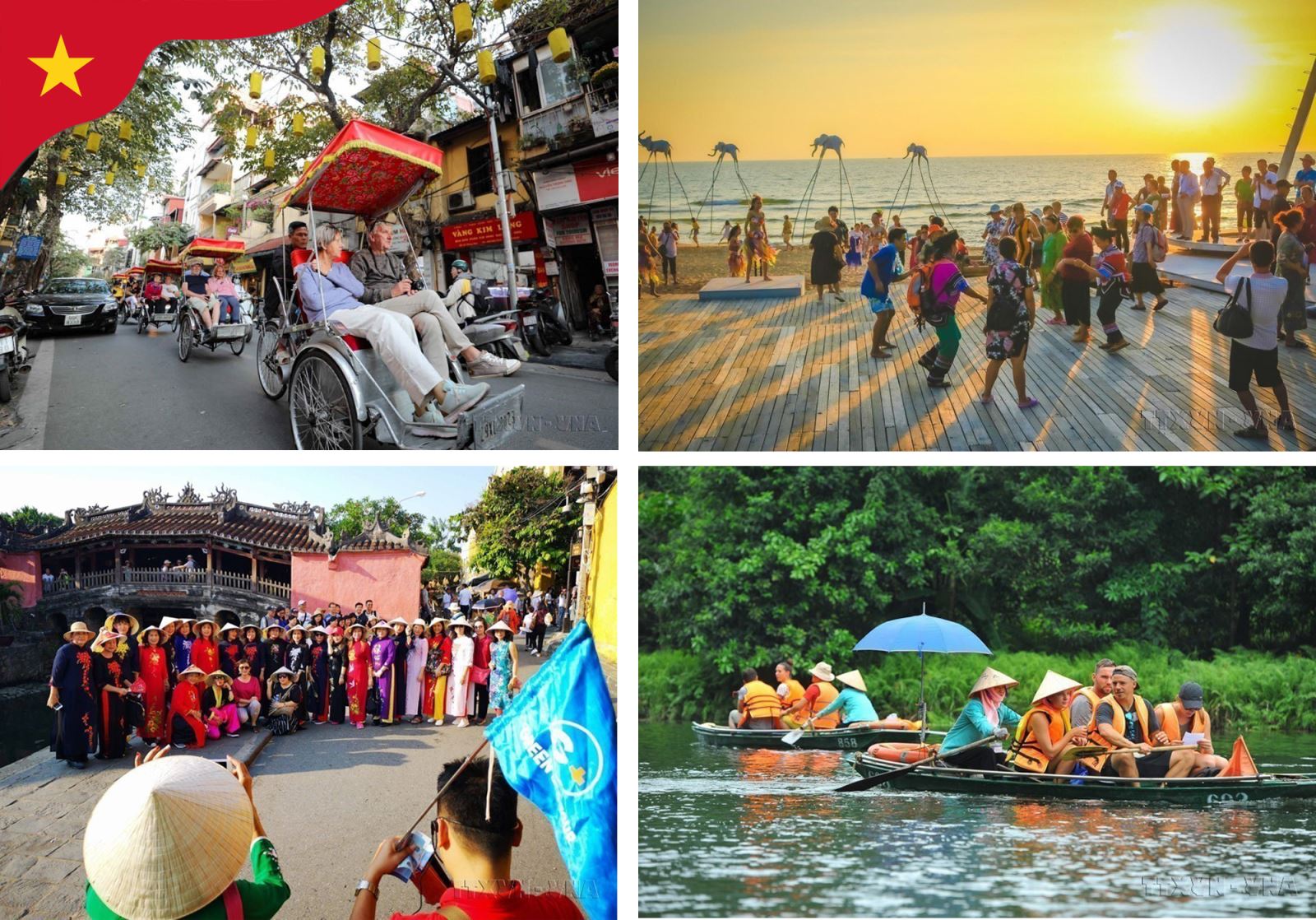
The tourism industry has transformed strongly into a modern industry with international competitiveness, gradually building the brand "Vietnam - a safe, friendly and attractive destination".
Trade and services are increasingly asserting their key role in the national economic structure. If before the renovation, services only accounted for a small proportion, now they have become one of the three main pillars of the economy, contributing nearly 42% of GDP. To date, Vietnam has signed and implemented 17 free trade agreements (FTAs) with many major partners in the world. In particular, participation in new-generation FTAs such as the Comprehensive and Progressive Agreement for Trans-Pacific Partnership (CPTPP), the European Union - Vietnam Free Trade Agreement (EVFTA), the Vietnam - United Kingdom Free Trade Agreement (UKVFTA) has opened up a large space for cooperation, helping Vietnamese goods to easily access leading markets in Europe, North America and Asia - Pacific. Thanks to that, the total import-export turnover has continuously increased, reaching more than 807 billion USD in 2024, with a trade surplus of nearly 25 billion USD - the 9th consecutive year of trade surplus. Along with that, the tourism industry is also making a strong breakthrough, welcoming over 17.5 million international visitors in 2024 alone, affirming Vietnam as the leading attractive destination in the region. With a market size of over 100 million people and a rapidly growing middle class, trade and services are becoming an important driving force for growth and international integration.
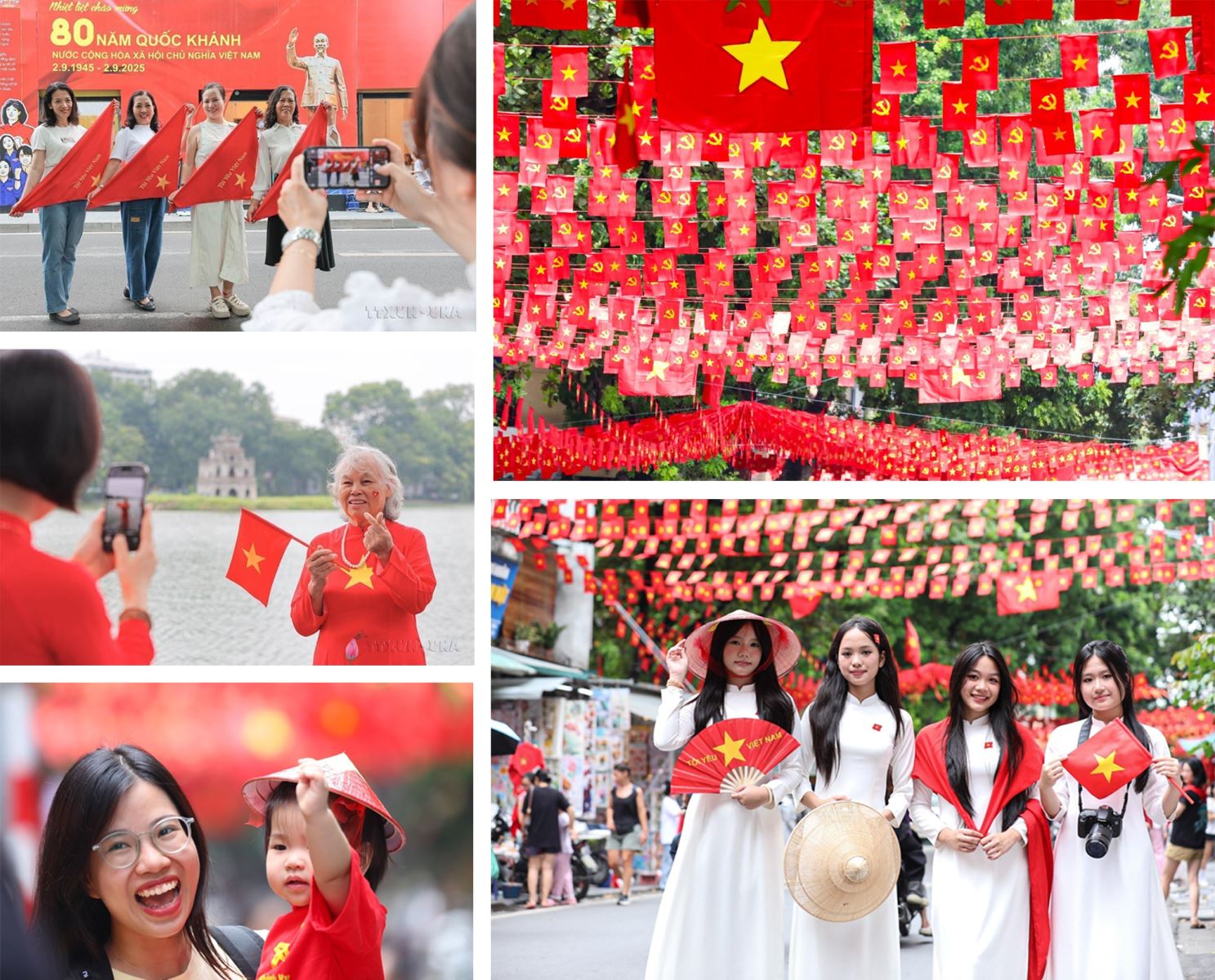
Many people and tourists eagerly checked in and captured meaningful moments on the occasion of the 80th National Day Anniversary (September 2, 1945 - September 2, 2025).
Socio-economic infrastructure has also made great strides, becoming an important foundation for the country's modernization. From a poor infrastructure after the war, Vietnam has now formed an increasingly synchronous and modern infrastructure network. Thousands of kilometers of highways, large bridges, seaports, and international airports have been built, creating conditions for seamless connections between regions, areas, and with other regions and the world. Electricity, renewable energy, telecommunications, and information technology systems have developed rapidly, meeting the requirements of industrialization and digital transformation. In particular, the urbanization rate has been strong, with the emergence of many modern urban areas, coastal economic zones, and concentrated industrial parks, contributing to changing the face of the country. The increasingly complete infrastructure not only facilitates production, business, and circulation of goods, but also improves the quality of life of the people, affirming the strategic vision in development investment.
In the technology era, Vietnam has identified digital transformation as a new growth driver. Many sectors from finance - banking, trade, education to public administration are transforming strongly on digital platforms. E-commerce has exploded with a scale of tens of billions of USD, contributing to the digital economy accounting for about 18.3% of GDP in 2024 and is forecast to continue to grow rapidly in the coming years. Vietnam is currently considered one of the countries with the fastest digital economic growth rate in Southeast Asia, opening up great room to improve labor productivity and national competitiveness.

Science and technology, innovation and digital transformation are developing strongly in Vietnam.
Along with digital transformation, the innovative startup ecosystem in Vietnam has also developed strongly. In recent years, thousands of startups have been born, focusing on the fields of fintech, e-commerce, logistics, artificial intelligence, green technology, etc. Vietnam has become one of the countries with the most vibrant startup community in Southeast Asia, attracting billions of dollars in venture capital each year. Many products and services of Vietnamese startups have entered the regional and international markets, affirming the creativity of Vietnamese intelligence. The development of the innovative ecosystem is adding new energy to the economy, contributing to bringing Vietnam up to speed with the trend of the knowledge-based economy era.
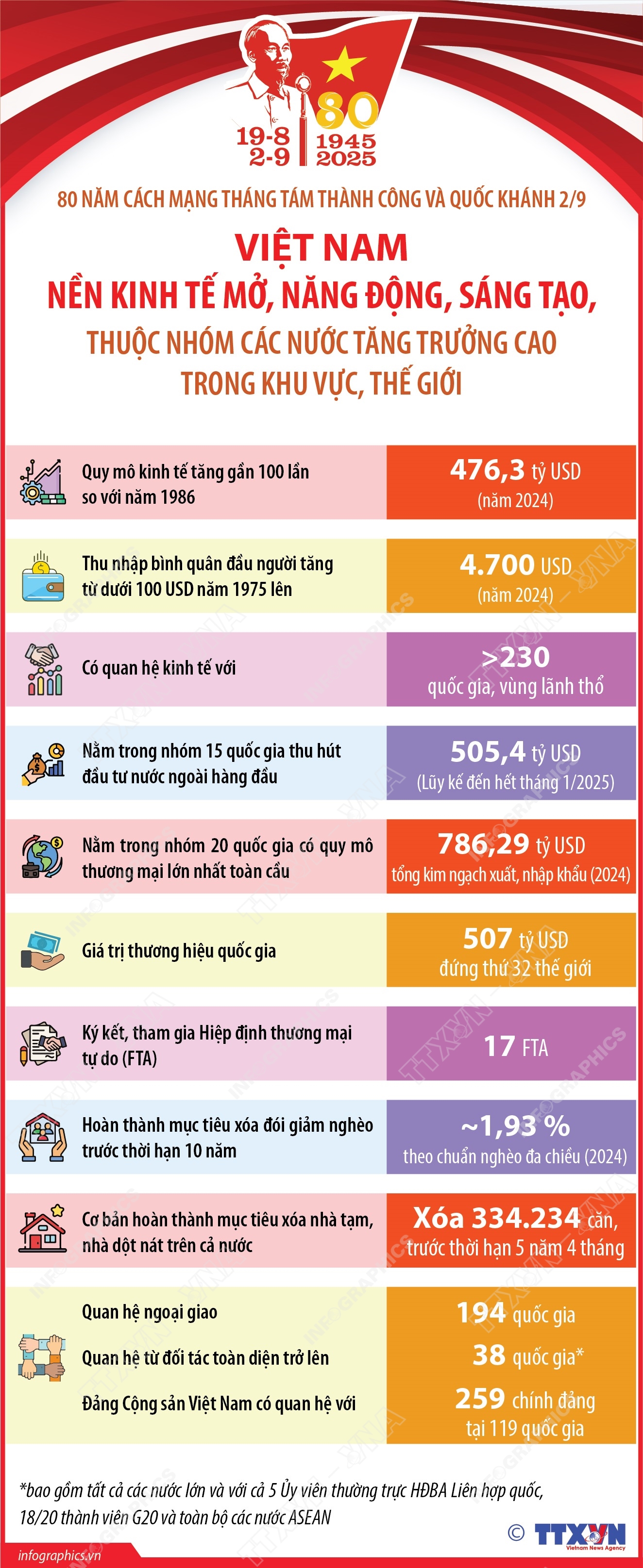
Economic achievements in nearly four decades of renovation have brought about great changes in people's lives and the country's position. People's lives have been increasingly improved, the poverty rate has decreased sharply, income levels and quality of life have continuously improved. The healthcare, education and social security systems have been strengthened with many humane policies, ensuring fairness and spreading development to all regions and all subjects. On the basis of an increasingly strong economy, Vietnam has also gradually affirmed its international position. From expanding bilateral relations, becoming a member of many important economic and political organizations to participating in new-generation free trade agreements, our country has deeply integrated into the global value chain, becoming a reliable partner of many major economies. Success in maintaining sustainable growth associated with social stability has further strengthened Vietnam's prestige and mettle in the international arena.
It can be seen that over the past 80 years, Vietnam has gone through a long journey with many difficulties and challenges, but also brilliant achievements. These achievements are the result of the Party's correct leadership, the Party's determination to constantly innovate, and the solidarity and support of the People. With the goal of becoming a developed country by 2045, Vietnam will continue to write new milestones, realizing the aspiration of building a strong, prosperous, and happy Vietnam.
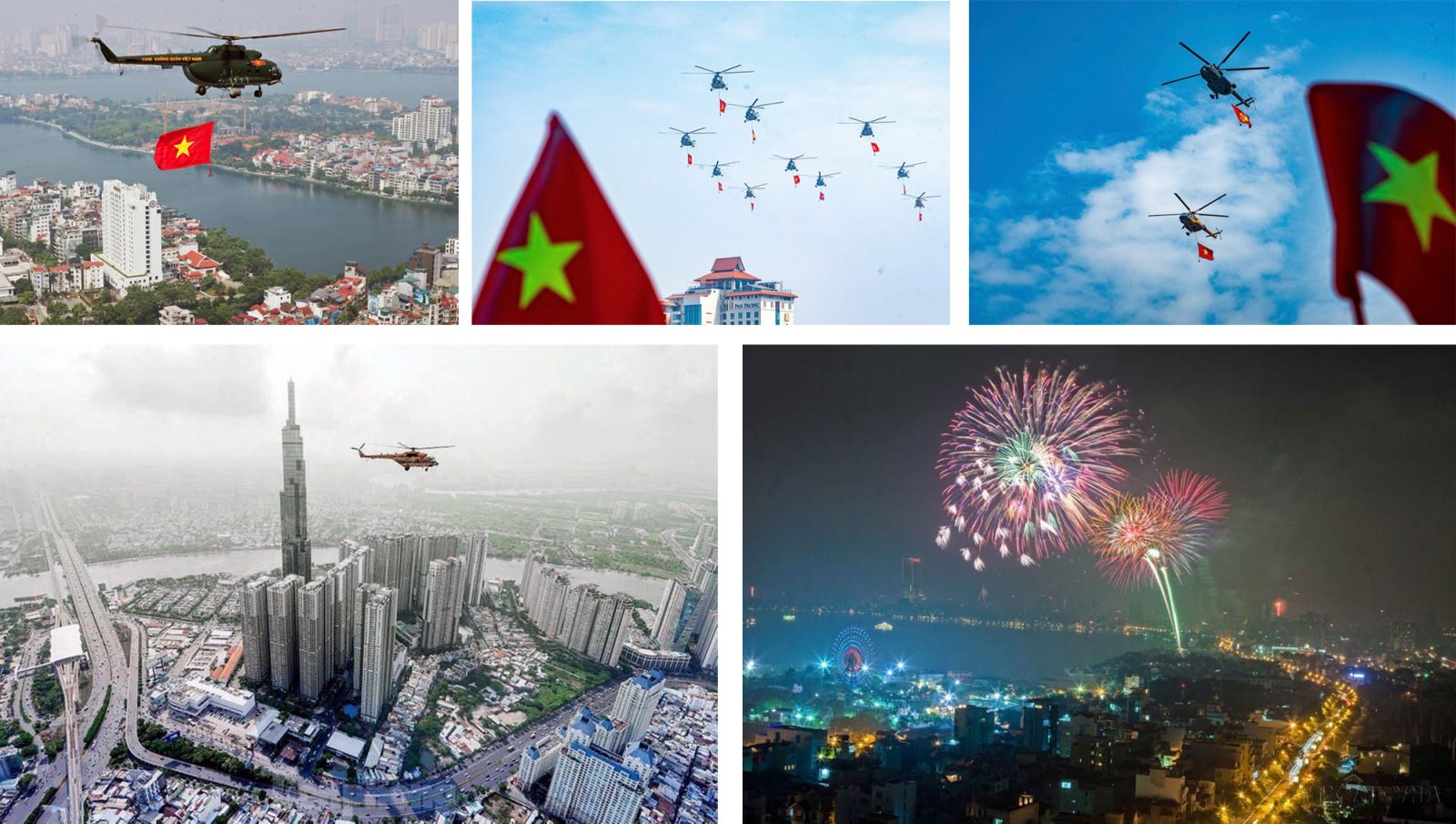
Article: Minh Duyen
Photo, graphics: VNA
Editor: Ky Thu
Presented by: Nguyen Ha
Source: https://baotintuc.vn/long-form/emagazine/hien-thuc-hoa-khat-vong-xay-dung-dat-nuoc-hung-cuong-thinh-vuong-20250828102108921.htm



























































![[VIDEO] Propaganda and promotion of the use of E10 RON95 gasoline products in Quang Ngai | QNgTV](https://vphoto.vietnam.vn/thumb/402x226/vietnam/resource/IMAGE/2025/9/4/eeb7f42edd2745a482b4e5fd2f10e9b2)














































Comment (0)